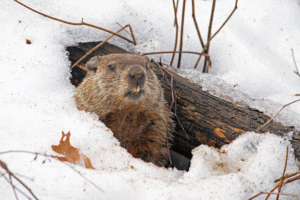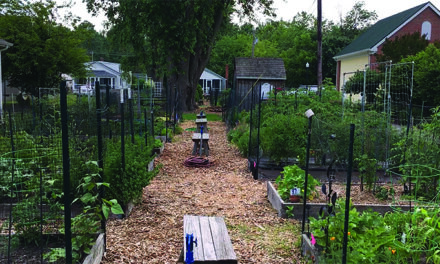
Groundhogs are the largest rodent in this area that hibernates — hence why their emergence from underground burrows is what began the historical tradition of Groundhog Day.
When you hear the word hibernation do you automatically envision a bear gorging himself on salmon in preparation for the long winter months ahead?
Afterwards, he will retreat into his warm cave to sleep away the season and emerge much thinner and simply famished as soon as the cold air hints at the first sign of spring.
Unbeknownst to many, there are also a great deal of critters right here on the Eastern Shore that do quite the same thing in order to survive the winter.
Of course, there are many birds — from orioles to hummingbirds — that fly south for the winter and avoid the season altogether.
Quite a few wise humans that do the same thing as well.
Fish will swim to deeper, warmer waters and even the Monarch butterflies that emerged in September will start their trip for Mexico for the winter.
There are, however, quite a few of our local feathered friends that will hunker down and stay put.
In preparation to handle the harsh winter temperatures ahead, birds will puff up their feathers to make air pockets act as insulation, and often alternate standing feet, allowing one foot to warm under their feather coats at a time.
Many birds go through an entire molt, to gain more protective winter plumage.
When the ground is frozen or covered with snow, backyard feeders become a frenzy of activity, the birds are thankful for an easy meal.
Some birds even migrate to Maryland from more northern parts of the country, such as the year round junco.
Their numbers will increase substantially as they form a winter flock — earning their nickname “snowbird.”
Juncos are the wee gray birds that look like puffed up ping-pong balls you will often see socializing at the feeders on winter mornings, even in single digit temperatures.
Other animals that make adaptations in Maryland and surrounding areas are the red fox and the white-tailed deer that don thicker coats to provide vital insulation when winter is coming.
Even the famous Assateague Island ponies take on a noticeable, shaggy appearance.
But what about the guys that just can’t deal with the cold temperatures?
Small mammals like rodents and bats will transition into a dormant state, their heartbeat reducing to an extremely low level, body temperatures reaching near freezing.
Even if handled, which is not a good idea, they may appear lifeless because, quite literally, they are.
Groundhogs are the largest rodent in the area that assumes this sleepy state of survival — hence why their emergence from underground burrows is what began the significance of Groundhog Day.
“While these critters are true hibernators in the area, many other animals go into a state of significantly less activity called torpor.
“In cold temperatures it takes a lot of energy for animals to maintain a high body temperature,” according to the Society for the Protection of New Hampshire Forests. “During the wintertime there is not a lot of food available, so it is hard for animals to get energy. Thus, torpor is a way for those animals to save their limited energy reserves during very cold temperatures.”
Torpor differs from true hibernation because it is a state that often just lasts for a shortened amount of time, unlike hibernation, which continues on over the course of several months.
Raccoons, chipmunks and skunks go into torpor, which most often occurs during cold winter nights or an extreme drop in temperature.
Their metabolic rate slows substantially and they may appear dead.
Snakes, turtles and other cold blooded creatures go into brumation which essentially falls under the same state as hibernation or torpor, but much like torpor the animal will wake up when the temperatures aren’t as harsh.
This is why on a rare warm winter day we could see a snake emerge from its hiding place to search for food.
Turtles will leave their burrow — often up to two feet deep — to search for vegetation and retreat when they day turns cold again.
Aquatic turtles and bullfrogs will burrow themselves at the bottom of a body of water where they cannot freeze and can absorb oxygen through their skin.
When the waters warm they surface and begin to search for food again, resuming their normal activity.





